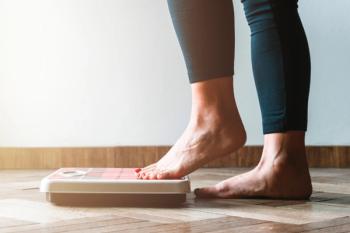
Flip The Pharmacy Program: Caring for Patients in a Pandemic
Flip the Pharmacy helps pharmacy teams provide enhanced clinical services for their patients and has developed a COVID-19 best practices program.
With the recent coronavirus disease 2019 (COVID-19) pandemic, the Flip the Pharmacy program had to quickly adapt and develop a COVID-19 change package.
The FtP team had already planned for an opioid change package to begin in April, but with the COVID-19 pandemic,
Clifton explained, “We had to pivot quickly, and have a plan ready in 1 to 2 weeks.”
Because community pharmacists have been doing an excellent job implementing services, Clifton and his team decided they would create an avenue for pharmacies and CPESN leaders to submit their own best practices and questions. They also worked with the National Community Pharmacists Association on policy and regulatory issues. A
“We had 15,000 visits to this newly created site,” Clifton said.
The FtP team rolled out a series of 4 change packages.
Clifton noted, “A patient sees the primary care provider an average of 3.5 times per year, but may visit the pharmacy up to 35 times a year. The pharmacy may be the only point of health care that patients see during this time, so patient triage is an ideal opportunity for pharmacists.”
This package helps the pharmacy team triage a patient with COVID-19 symptoms, by evaluating the patient’s risk and symptoms. The pharmacist will then develop a plan of care, which includes testing, treatment, and follow-up, as well as communication with the patient’s primary care provider.
“Simple, easy-to-follow directions were provided that we could apply to different scenarios,” Suthers said.
The change packages provide helpful information on ways to protect both the staff and community. Bryan and her team worked with safety supply companies to obtain sufficient personal protective equipment, and temporarily converted to a closed-door setup, with patients using the drive-thru window to drop off and pick up prescriptions.
Suthers emphasized that the change packages allowed for gradual integration.
“After becoming comfortable with alternate prescription processing, delivery methods, sanitizing, and proper PPE procedures from change package number 1, which also guided us in forming our testing protocols for COVID-19, we implemented change package number 2.”
Change package number 2, Suthers explained, was very thorough and walked the pharmacy team through the triage process to determine the need for COVID-19 testing, including how to screen patients, obtain a history, document in the eCare plan, and follow up with the patient regarding test results.
Curbside testing was also set up by the staff—they have already tested several dozen patients, who are grateful for the service and the quick turnaround time for results. The team feels comfortable performing the tests, because they take all appropriate precautions.
Although more than 500 pharmacies enrolled with CPESN were involved with the change packages, FtP coaches made themselves available to help any community pharmacy that needed help navigating various scenarios. Clifton shares that the feedback from coaches and leaders was inspiring, and everyone appreciated the support from the FtP team.
Bryan emphasized that with the Flip the Pharmacy program, “the most crucial part of success is that everyone has to be involved—don’t put it all on one person. Everyone has to know why the program is important for it to work, because any person on the team can pick up a patient problem, not just the pharmacist.”
Bryan shared a story of a technician saving a patient’s life. The technician noticed that the patient was picking up sublingual nitroglycerin several times a month, and it turned out that the patient had a blockage. Bryan and Suthers said they enjoy participating in the Flip the Pharmacy program.
“It is broken down into manageable small changes each month, so that after two years, you completely transform your pharmacy to a practice that focuses on patient outcomes instead of primarily filling prescriptions,” Bryan said.
Bryan credits collaboration as being a key part of the pharmacy’s success with FtP.
“It has been inspiring to watch the little changes in the pharmacy practices each month lead to changes in patient behaviors and changes in patient outcomes including reductions in blood pressures and other clinical measures,” she said.
Bryan’s call to action: “continue collaborating with other pharmacists, pharmacies, other health care providers, and members of your communities. Everyone working together in collaboration makes all the difference.”
Newsletter
Stay informed on drug updates, treatment guidelines, and pharmacy practice trends—subscribe to Pharmacy Times for weekly clinical insights.


















































































































































































































